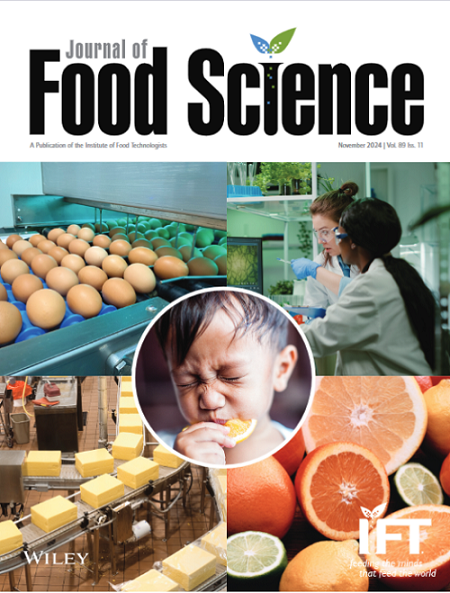Dynamic changes in microbial communities during sweet flour sauce fermentation and their correlations with physicochemical properties and volatile compounds
Abstract
Sweet flour sauce is a traditional fermented condiment in China, known for its distinct sweet and savory flavor profile. During the fermentation process, the dominant bacterial genera were Ralstonia and Bacillus, and the dominant fungal genera were Aspergillus, Issatchenkia, Clavispora, and Zygosaccharomyces. In addition, total acidity (TA) and amino acid nitrogen (AAN) in different fermentation stages were determined by the acidometer titration method, and reducing sugar (RS) was determined by the 3,5-dinitrosalicylic acid method. The correlation network revealed TA, RS, and AAN were closely related to multiple microorganisms. TA showed significant positive correlations with Gluconobacter, Candida, and Clavispora. RS was positively correlated with Geotrichum, and AAN was positively correlated with Methylobacterium-Methylorubrum and Zygosaccharomyces. Correlation network analysis was also conducted to show the significant correlations among 2 bacterial genera, 9 fungal genera, and 16 characteristic volatile compounds. In general, the relationships between fungus and volatiles were more significant, with a wide range of yeasts exerting significant functions in forming flavor compounds, whereas most bacteria were negatively correlated with volatiles. Among fungi, Clavispora and Meyerozyma were positively associated with furfural, methional, 5-methyl-2-phenyl-2-hexenal, 2-isopropyl-5-methylhex-2-enal, and benzeneacetaldehyde. Zygosaccharomyces exhibited strong correlations with acetic acid, 2-furanmethanol, phenylethyl alcohol, and 2-methyl-1-butanol. These findings can be used to better understand and manage the fermentation process, making it possible to improve the quality of sweet flour sauce by enriching key microorganisms.
Practical Application
During the fermentation of sweet flour sauce, the metabolic activities of microbial communities exerted an important function in forming unique sensory and nutritional properties. These findings revealed significant correlations among microorganisms, vital physicochemical indices, and key volatiles, providing a theoretical foundation for regulating the fermentation process, enhancing product qualities, and developing functional strains.

 求助内容:
求助内容: 应助结果提醒方式:
应助结果提醒方式:


